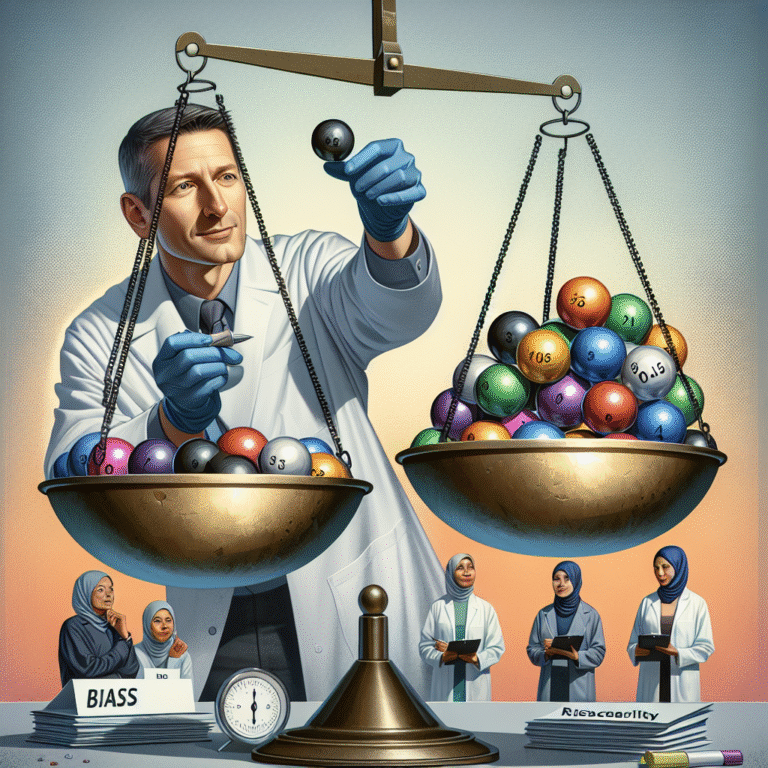
Introduction
Navigating the world of variables can feel like sailing through a foggy sea. Among the myriad elements you may encounter, the dependent variable often shines as a beacon, guiding researchers and practitioners toward meaningful conclusions. Understanding this crucial component is not just important; it’s essential for anyone looking to make informed decisions based on data. The role of the dependent variable is pivotal in experiments, statistical analyses, and even real-world applications. With proper comprehension, you can unlock insights that drive impactful outcomes in your field.
In this article, we’ll journey through the complexities of the dependent variable, showcasing its importance, and how to effectively navigate this essential aspect of research. Whether you’re a student, researcher, or seasoned professional, this guide is designed to bolster your understanding and application of the dependent variable in both theoretical and practical scenarios.
The Foundation: What is a Dependent Variable?
To begin our exploration of variables, it’s vital to understand what a dependent variable is. Simply put, a dependent variable is a factor that researchers measure in an experiment. It is directly affected by changes in the independent variable. In research methodology, the dependent variable provides the results or outcomes that one is interested in exploring.
Characteristics of the Dependent Variable
- Measurable: The dependent variable must be quantifiable. This allows researchers to assess its variations and understand how it responds to changes.
- Respondent to Change: It reacts to alterations in the independent variable, making it essential for analyzing causal relationships.
- Focused on Outcomes: It typically represents what researchers are trying to understand, prove, or improve.
In Contrast: The Independent Variable
While navigating the world of variables, it’s helpful to juxtapose the dependent variable with the independent variable. The independent variable is the factor that is manipulated in an experiment to see if it will produce a change in the dependent variable.
Example: In a study examining the effect of study time on exam scores, "study time" is the independent variable, while "exam scores" represent the dependent variable.
Case Study 1: Education Research
In an educational context, the dependent variable often relates to student performance metrics, such as test scores or GPA. A notable study conducted by Smith et al. (2020) investigated the impact of online learning on student grades.
Analysis
The study examined how different modes of instruction (independent variable) affected student performance measured by GPA (dependent variable). The results indicated that students who engaged with interactive online materials scored significantly higher than those in traditional lecture-based environments. This clear correlation emphasizes the importance of understanding how a dependent variable can illuminate the effects of different independent variables in educational settings.
Research Methodologies: How to Identify Dependent Variables
Navigating the world of variables means understanding how to effectively identify and define dependent variables in various research methodologies. Here are common types of research designs where dependent variables play a critical role:
1. Experimental Research
In experimental research, participants are assigned to different conditions to test the impact of the independent variable on the dependent variable. The outcome could be a behavioral change, a measured attribute, or any outcome that researchers are trying to assess.
2. Observational Studies
In observational studies, researchers measure dependent variables in natural settings without manipulation. For instance, a sociologist might examine the correlation between community resources (independent variable) and resident health outcomes (dependent variable).
3. Longitudinal Studies
Longitudinal studies observe changes over time, collecting data from the same subjects repeatedly. Here, the dependent variable might be health outcomes over several years, while the independent variable could be lifestyle changes.
Case Study 2: Health Sciences
A 2021 study by Johnson and Lee aimed to explore how diet (independent variable) impacts weight loss (dependent variable). Participants were divided into different dietary plans, and their weight loss was monitored over six months.
Analysis
The results demonstrated a significant correlation between the type of diet and the amount of weight lost. This effectively illustrated the importance of clearly defining both the independent and dependent variables in health research and highlighted how dependent variables are crucial for evaluating the effectiveness of different interventions.
Using Data: The Importance of Measurement
Navigating the world of variables also involves understanding measurement techniques. The precision with which a dependent variable is measured can significantly influence results. Here are some key points to consider:
Types of Measurement
- Quantitative: Involves numerical data, allowing for statistical analysis (e.g., scores, rates).
- Qualitative: Involves categorizations that describe characteristics or qualities (e.g., levels of satisfaction).
Tools and Techniques
Surveys, experiments, and observational tools are fundamental in accurately measuring dependent variables. Using consistent methods ensures that the data gathered are reliable and valid.
Dependent Variables in Social Sciences
In social sciences, a myriad of dependent variables are used to understand complex societal dynamics.
Example: The Influence of Media on Public Opinion
Researchers exploring how media exposure affects public opinion often treat "public opinion" as the dependent variable. They might manipulate the type and frequency of media exposure (independent variable) to observe changes in attitudes or beliefs.
Analysis
This investigative approach can yield significant insights, revealing how different media narratives shape public perception of issues, thereby emphasizing the vitality of the dependent variable in understanding social phenomena.
Data Visualization: Simplifying the Complex
As we continue navigating the world of variables, visual data representations can enhance understanding. Here’s an example of how a table can clarify critical points:
| Study | Independent Variable | Dependent Variable | Key Findings |
|---|---|---|---|
| Smith et al. (2020) | Mode of Instruction | GPA | Interactive materials improve GPA |
| Johnson & Lee (2021) | Dietary Plan | Weight Loss | Specific diets lead to significant weight loss |
| Media Influence Study | Type of Media Exposure | Public Opinion | Different narratives significantly shift opinions |
Navigating Challenges Related to Dependent Variables
Understanding and working with dependent variables comes with its challenges. Here are some common ones:
1. Misidentification
Researchers might misidentify dependent variables, leading to flawed conclusions. Ensuring clarity in definitions is crucial.
2. Confounding Variables
Confounding variables can complicate analyses. These extraneous factors can affect the dependent variable and obscure the relationship with the independent variable.
3. Measurement Issues
Inaccuracies in measuring the dependent variable can skew outcomes. It’s vital to employ reliable measurement tools to enhance validity.
Conclusion
Navigating the world of variables: focusing on the dependent variable is a journey filled with insights and revelations. By grasping the critical nature of dependent variables and understanding their role in research, you are positioned to draw meaningful conclusions that can drive change, inform practices, and propel innovations across various fields.
Whether conducting your own research or evaluating findings from others, you now possess the tools to critically analyze dependent variables, leading to a deeper comprehension of the relationships at play. Remember, each dependent variable offers a glimpse into the intricacies of the independent variable’s impact, ultimately enriching your understanding of the subject matter.
FAQs
1. What is the difference between a dependent variable and an independent variable?
The independent variable is the factor that researchers manipulate, while the dependent variable is the one that is measured to observe the effects of that manipulation.
2. Why is it crucial to define dependent variables in research?
Clear definition helps in the accurate measurement and interpretation of outcomes, ensuring valid and reliable results.
3. What are some examples of dependent variables in psychological research?
Common examples include reaction time, anxiety levels, and overall mental health outcomes.
4. Can dependent variables be qualitative?
Yes, while most dependent variables are quantitative, qualitative measures can also serve as dependent variables, particularly in social sciences.
5. How can mistakes in identifying dependent variables impact research outcomes?
Misidentifying dependent variables can lead to incorrect conclusions, potentially impacting future research or applications in practice.
Navigating the complexities of variables is a crucial skill in research and analytics. By focusing on dependent variables, you’re not just learning about statistics; you’re engaging with the foundational elements that allow you to draw insights from data. The world of variables is vast, and every exploration you undertake will lead to new discoveries—each dependent variable representing an opportunity for transformation and growth.

















